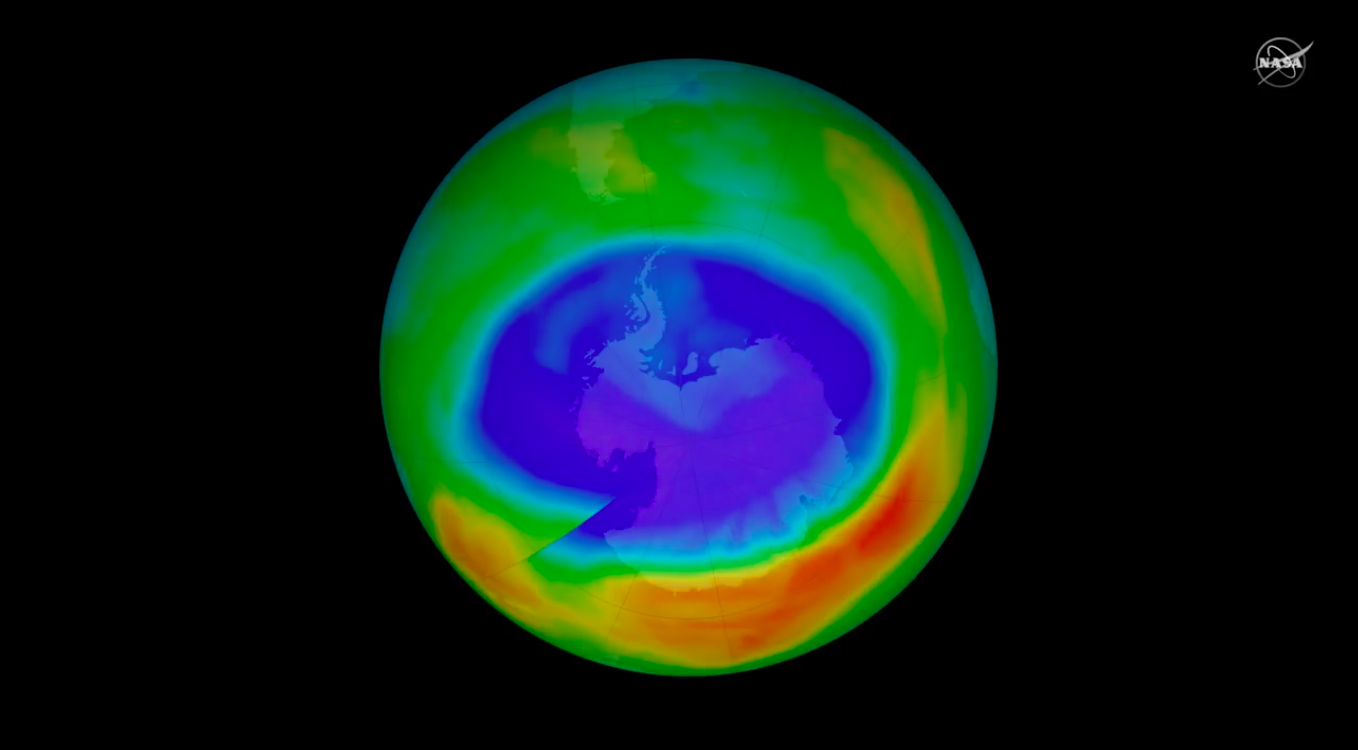
NASA confirms proof of Antarctic ozone hole recovery
NASA scientists have produced solid evidence which shows that the ozone layer is, in fact, recovering. This is the first study to demonstrate that the Montreal Protocol, which began phasing out chlorofluorocarbons (CFCs) and other ozone-depleting substances in the 1980s, was a successful strategy.
The Aura Satellite, which was built by NASA’s Jet Propulsion Laboratory, was launched over 10 years ago to monitor the chemical makeup of the atmosphere and to allow scientists to study the the climate, air quality, and the Earth’s ozone layer.
The research team analyzed over 10 years of data from the Aura Satellite and found a direct link between the recovery of the ozone and the regulation of CFCs. They detected lower levels of chlorine which has resulted in less depletion of the ozone layer.
According to the team’s measurements, the amount of chlorine in the ozone has declined by around 20 percent over the last 12 years. Susan Strahan is an atmospheric scientist from NASA’s Goddard Space Flight Center and the lead author of the study.
“We see very clearly that chlorine from CFCs is going down in the ozone hole, and that less ozone depletion is occurring because of it,” said Strahan.
The ozone layer is an area of Earth’s stratosphere which acts as a shield by absorbing up to 99 percent of the sun’s dangerous ultraviolet radiation. In 1985, a team of British Antarctic Survey scientists reported finding a recurring hole in the Antarctic region of the ozone layer.
Nations responded by signing a treaty known as the Montreal Protocol, which was ultimately amended to completely phase out CFCs. This is the first study to use actual measurements of the chemical composition inside the ozone hole to confirm that the ozone is recovering as a result of the elimination of CFCs.
The experts explained that the hole in the ozone will continue to recover over time.
“CFCs have lifetimes from 50 to 100 years, so they linger in the atmosphere for a very long time,” said study co-author Anne Douglass. “As far as the ozone hole being gone, we’re looking at 2060 or 2080. And even then there might still be a small hole.”
The study is published in the journal Geophysical Research Letters.
—
By Chrissy Sexton, Earth.com Staff Writer
Image Credit: NASA’s Goddard Space Flight Center/Katy Mersmann













